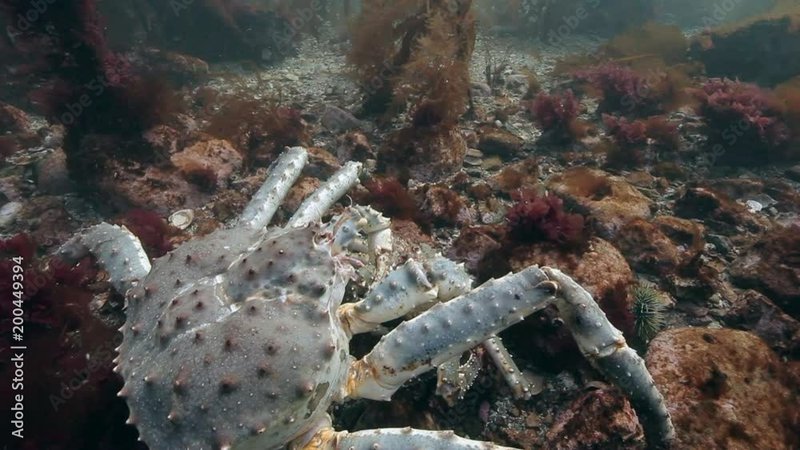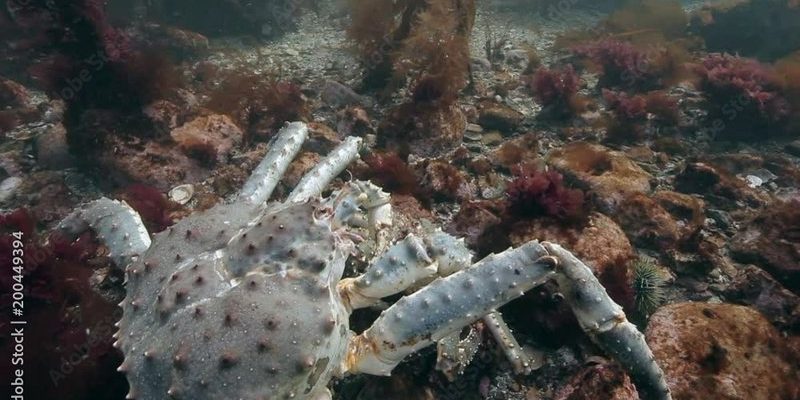
Imagine the ocean as a massive stage where these crabs perform their most important act: reproduction. From the moment a female king crab releases her eggs to the eventual hatching of tiny larvae, it’s a delicate dance played out against the backdrop of the sea. Understanding this process not only paints a vivid picture of their survival but also highlights the importance of conserving these remarkable creatures. Let’s dive deeper into the world of king crab reproduction!
The King Crab Life Cycle
The life cycle of a king crab is both complex and intriguing. It all begins when a female king crab reaches maturity, usually around five to seven years old. She will then undergo a molt, shedding her shell to prepare for mating. This is the perfect time for male crabs to showcase their strength and charm. They compete to impress the female, often engaging in a series of displays that look like a dance.
Once a female has chosen her mate, she’ll receive sperm from the male. After mating, she can store this sperm for several years, which is quite handy since she won’t be ready to fertilize her eggs until the next molting season. When the eggs are ready, she lays them in a safe place, usually among rocks or in crevices where they can be protected from predators.
The Egg-Laying Process
After mating, the female king crab will carry her fertilized eggs under her abdomen for about ten months. During this time, she is highly protective of her eggs, often found hiding in safe spots. This period of gestation is crucial, as the eggs develop through various stages.
As the eggs mature, they can look like tiny beads stuck together. Depending on the specific species and environmental conditions, a female can lay anywhere from 10,000 to 200,000 eggs! Yes, that’s a staggering amount. Each egg is coated in a sticky substance that helps them adhere to surfaces and protect them from being swept away by currents.
The Hatching Process
Finally, the big moment arrives when the eggs are ready to hatch. This usually happens in late spring to early summer. *Imagine the excitement!* The tiny larvae that emerge are called zoea, and they are drastically different from adult crabs. These baby crabs are translucent and very small, measuring just a few millimeters.
Zoea are free-swimming and rely on ocean currents to drift away from their mother, seeking food and safety in the vast ocean. As they float along, they undergo several molts, transitioning through various stages until they become juvenile crabs. This stage can last several months, during which they are vulnerable and rely on their surroundings for protection.
Juvenile Development
Once the zoea develop into juvenile crabs, they resemble their adult counterparts more closely. However, they are still small and lack some of the features of fully grown king crabs. This transitional phase is vital for their survival; they need to find a suitable habitat that offers enough food and security from predators.
During this stage, juvenile crabs often hide in seaweed or under rocks to avoid being eaten by larger predators. They feed on tiny marine organisms, using their developing claws to capture food. As they grow, they will molt multiple times, gradually increasing in size until they are ready to venture into deeper waters.
Factors Affecting Survival
Several factors can impact the survival of juvenile king crabs. Environmental factors such as water temperature, salinity, and food availability play a significant role. For instance, if the water temperature is too warm, it can lead to higher mortality rates among young crabs.
Additionally, changes in habitat caused by overfishing, pollution, or habitat destruction can pose risks to these young crabs. Maintaining a healthy ecosystem is essential for the future of king crabs; they rely on a balanced environment to thrive.
Mating Behavior and Seasonality
Mating behavior in king crabs is fascinating. The mating season typically occurs in the spring, coinciding with their molting period. Male crabs will assert their dominance through physical displays, and females will choose mates based on these displays and the males’ physical condition.
Interestingly, females can mate with multiple males, creating a chance for genetic diversity. This diversity is crucial for the population’s resilience against diseases and environmental changes. After mating, males often leave, while females carry their eggs until they hatch, showcasing a somewhat independent approach to parenting.
Conservation and Challenges
The breeding and reproduction of king crabs face numerous challenges due to human activity. Overfishing remains one of the primary threats to king crab populations. When too many crabs are harvested, it can disrupt the natural cycle and lead to declines in population numbers.
To combat this, many fisheries have established regulations on crab harvesting to ensure sustainable practices. Additionally, habitat protection is critical. Efforts to reduce pollution and protect marine environments can help maintain the delicate ecosystems that king crabs depend on for breeding and development.
Conservation initiatives focus on monitoring crab populations, enforcing sustainable fishing practices, and educating the public about the importance of preserving these magnificent creatures. By raising awareness and promoting responsible fishing, we can help ensure that king crabs continue to thrive for generations to come.
Understanding the breeding and reproduction of the king crab opens a window into the mysteries of the ocean and the resilience of life beneath the waves. From their fascinating mating rituals to the challenges they face, these creatures embody the balance between nature and survival.
As we enjoy these delicacies on our plates, it’s essential to remember the intricate journey that leads them there. By supporting sustainable practices and advocating for ocean conservation, we can all play a part in protecting the future of king crabs and their unique reproductive journey. Together, let’s ensure that these incredible creatures continue to thrive in our oceans!

